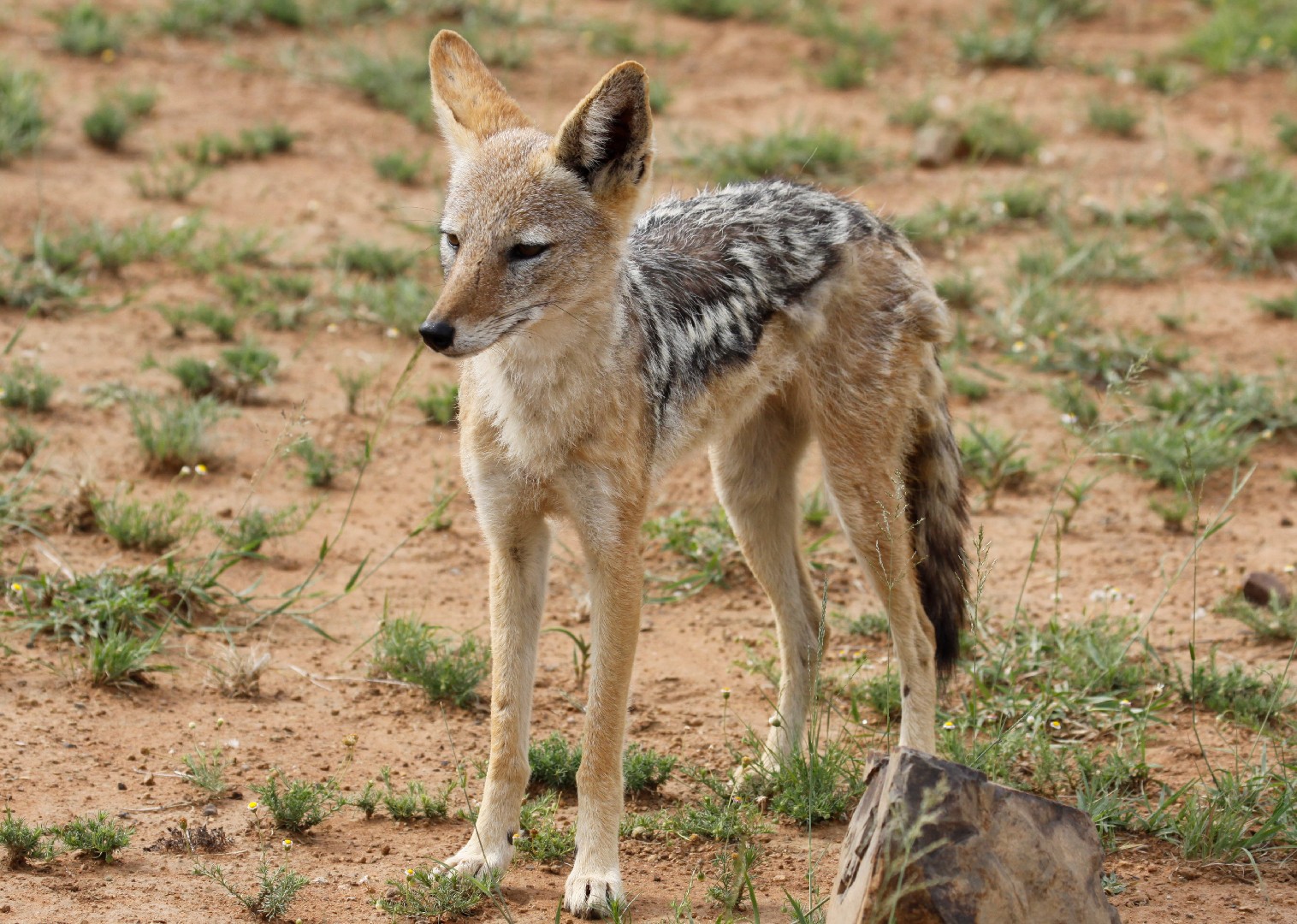Black-backed jackal
A species of Wolves jackals and allies Scientific name : Canis mesomelas Genus : Wolves jackals and allies
Black-backed jackal, A species of Wolves jackals and allies
Scientific name: Canis mesomelas
Genus: Wolves jackals and allies
Content
Description General Info
 Photo By Derek Keats , used under CC-BY-2.0 /Cropped and compressed from original
Photo By Derek Keats , used under CC-BY-2.0 /Cropped and compressed from original Description
The black-backed jackal is a fox-like canid with a slender body, long legs, and large ears. It is similar to the closely related side-striped jackal and more distantly related to the golden jackal, though its skull and dentition are more robust and the incisors much sharper. It weighs 6–13 kg (13–29 lb), stands 38–48 cm (15–19 in) at the shoulder, and measures 67.3–81.2 cm (26.5–32.0 in) in body length. The base colour is reddish brown to tan, which is particularly pronounced on the flanks and legs. A black saddle intermixed with silvery hair extends from the shoulders to the base of the tail. A long, black stripe extending along the flanks separates the saddle from the rest of the body, and can be used to differentiate individuals. The tail is bushy and tipped with black. The lips, throat, chest, and inner surface of the limbs are white. The winter coat is a much deeper reddish brown. Albino specimens occasionally occur. The hair of the face measures 10–15 mm in length, and lengthens to 30–40 mm on the rump. The guard hairs of the back are 60 mm on the shoulder, decreasing to 40 mm at the base of the tail. The hairs of the tail are the longest, measuring 70 mm in length. 
General Info
Lifespan
10-12 years
Diet
Black-backed jackal is primarily an omnivore, with a food preference for small to medium-sized mammals. The diet also includes insects, reptiles, and occasionally fruit. Black-backed jackal is known for its scavenging behaviour, supplementing its diet with carrion when available.
Appearance
Black-backed jackal is medium-sized, displaying a lean body covered in long, dense fur. The coat primarily features a light silver-grey color, with distinct black markings on the back, flanks, and tail. The underparts and cheeks are white or cream-colored. Adults feature bushy tails and pointed ears, with males slightly larger than females, but both genders possessing notably formidable, sharp teeth.
Behavior
Black-backed jackal exhibits social behavior, living in groups or pairs. Its hunting habits are contingent on prey availability, often pursuing small to large herbivores. Black-backed jackal uses scent marking behaviors for territory assertion. Intricate vocal communication, including whoops and cackles, also characterizes black-backed jackal's behaviors.
Population
Stable